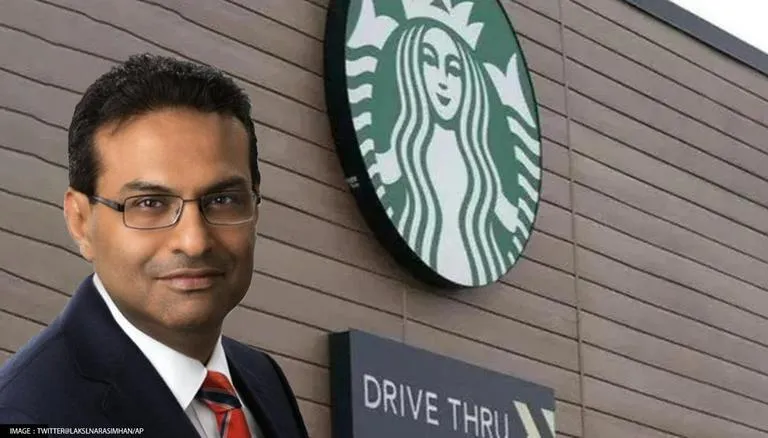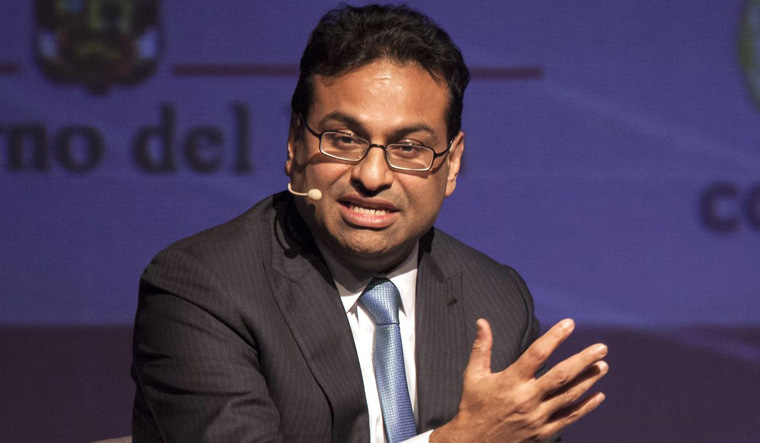Starbucks CEO’s Role and Responsibilities

The CEO of Starbucks holds a pivotal position, responsible for leading the company’s strategic direction, ensuring financial performance, and safeguarding the brand’s reputation. Their decisions have a profound impact on the company’s success and its standing in the competitive coffee industry.
Leadership and Vision
The Starbucks CEO is responsible for setting the company’s vision, mission, and values, which guide all strategic decisions and operational activities. They must inspire and motivate employees to embrace the company’s goals and contribute to its success. Effective leadership involves fostering a positive work environment, encouraging innovation, and promoting a culture of customer-centricity.
Strategic Planning and Execution
The CEO plays a key role in developing and implementing Starbucks’ strategic plans, which Artikel the company’s long-term objectives and growth strategies. This includes identifying market opportunities, developing new products and services, expanding into new markets, and optimizing existing operations. The CEO must ensure that these plans are aligned with the company’s overall vision and are executed effectively.
Financial Performance
The CEO is accountable for the company’s financial performance, including revenue growth, profitability, and shareholder value. They must make strategic decisions that drive revenue and manage expenses efficiently. This includes overseeing the company’s financial reporting, budgeting, and investment activities.
Brand Management
The Starbucks CEO is responsible for protecting and enhancing the company’s brand reputation. This involves maintaining the quality of products and services, ensuring customer satisfaction, and managing public perception. The CEO must address any challenges or controversies that may arise, ensuring that the brand remains strong and consistent.
Recent Initiatives and Challenges, Ceo of starbucks
The current CEO, Laxman Narasimhan, has faced various challenges since assuming his role in April 2023, including inflationary pressures, supply chain disruptions, and competition from other coffee companies.
Recent Initiatives
- Cost Optimization: Starbucks has implemented cost-saving measures to mitigate the impact of inflation, including reducing menu prices and streamlining operations. This approach aims to maintain profitability while remaining competitive in the market.
- Digital Transformation: Starbucks is investing in digital technologies to enhance the customer experience and drive revenue growth. This includes expanding its mobile ordering and payment options, improving its loyalty program, and developing personalized recommendations.
- Sustainability Initiatives: Starbucks is committed to sustainability and has set ambitious goals to reduce its environmental impact. This includes sourcing ethically sourced coffee beans, reducing waste, and using renewable energy sources.
Challenges and Strategies
- Competition: Starbucks faces fierce competition from other coffee chains, including Dunkin’ Donuts, Peet’s Coffee, and local coffee shops. The CEO must develop strategies to differentiate Starbucks from its competitors, such as offering unique products, enhancing the customer experience, and expanding into new markets.
- Labor Shortages: The coffee industry, like many others, has been impacted by labor shortages. Starbucks is addressing this challenge by increasing wages, offering benefits, and improving employee training programs. The company also aims to automate some tasks to improve efficiency.
- Inflationary Pressures: Rising inflation has increased the cost of raw materials, labor, and energy, impacting Starbucks’ profitability. The CEO must navigate these challenges by implementing cost-saving measures, adjusting pricing strategies, and exploring new revenue streams.
Leadership Style and Impact: Ceo Of Starbucks

The current Starbucks CEO, Laxman Narasimhan, has implemented a leadership style that emphasizes data-driven decision making, customer-centricity, and a focus on operational excellence. His leadership has had a significant impact on company culture and employee morale, shaping the direction of Starbucks for the future.
Impact on Company Culture and Employee Morale
Narasimhan’s leadership style has fostered a culture of innovation and continuous improvement within Starbucks. He has prioritized employee engagement and development, recognizing the vital role employees play in delivering a positive customer experience. This emphasis on employee well-being has contributed to a more positive and supportive work environment.
“Our people are our greatest asset. We are committed to investing in their development and creating a culture where they feel valued and respected.” – Laxman Narasimhan, Starbucks CEO
Communication and Implementation of Vision and Values
Narasimhan’s vision for Starbucks is centered on delivering a “customer-obsessed” experience through operational excellence, innovation, and a focus on community engagement. He has communicated this vision through various channels, including internal memos, company-wide meetings, and social media platforms.
Narasimhan has also implemented a number of initiatives to support his vision, including:
- Investing in technology to enhance the customer experience, such as mobile ordering and payment systems.
- Expanding Starbucks’ global presence through strategic acquisitions and partnerships.
- Introducing new products and services to cater to evolving customer preferences.
- Focusing on sustainability and social responsibility initiatives to create a positive impact on the communities Starbucks serves.
Comparison with Previous CEOs
Narasimhan’s leadership style contrasts with that of previous Starbucks CEOs, such as Howard Schultz, who was known for his charismatic and visionary leadership. While Schultz’s focus was on building a brand that was synonymous with quality and experience, Narasimhan’s approach is more data-driven and focused on operational efficiency and long-term sustainability.
This shift in leadership style has led to a period of significant transformation for Starbucks, as the company navigates a rapidly changing retail landscape. Narasimhan’s emphasis on technology, innovation, and operational excellence is positioning Starbucks to remain a leader in the coffee industry for years to come.
Starbucks’ Business Strategy and Innovation

Starbucks’ success can be attributed to a strategic blend of product innovation, customer experience enhancement, and global expansion. These strategies, driven by technological advancements and market insights, have propelled Starbucks to its current position as a global coffeehouse giant.
Key Business Strategies
Starbucks’ key business strategies are aimed at attracting and retaining customers, enhancing brand loyalty, and maximizing profitability. These strategies can be categorized into three main areas:
- Product Innovation: Starbucks continually introduces new products and variations of existing products to cater to changing consumer preferences and market trends. This includes seasonal beverages, new food items, and innovative coffee blends. Starbucks also invests in research and development to create unique and high-quality products that differentiate it from competitors.
- Customer Experience: Starbucks focuses on creating a positive and memorable customer experience. This includes a welcoming atmosphere, personalized service, and convenient access to products and services. Starbucks leverages technology to enhance the customer experience, such as mobile ordering and payment, personalized recommendations, and loyalty programs.
- Global Expansion: Starbucks has a strong presence in over 80 countries worldwide. The company continues to expand its global footprint by opening new stores in emerging markets and partnering with local businesses. This strategy allows Starbucks to reach new customers and tap into new revenue streams.
Role of Technology and Digital Initiatives
Technology plays a critical role in Starbucks’ growth and competitive advantage. Starbucks has implemented various digital initiatives to enhance customer experience, streamline operations, and drive innovation. These initiatives include:
- Mobile Ordering and Payment: Starbucks’ mobile app allows customers to order and pay for their beverages and food ahead of time, reducing wait times and enhancing convenience. The app also features personalized recommendations and loyalty program features, enhancing the customer experience.
- Digital Menu Boards: Starbucks has implemented digital menu boards in its stores, allowing for dynamic content updates and personalized recommendations based on customer preferences and location. These boards also enable the company to experiment with new product offerings and promotions.
- Data Analytics: Starbucks uses data analytics to understand customer preferences, identify trends, and optimize operations. This data helps the company personalize the customer experience, develop new products, and improve store efficiency.
- Social Media Engagement: Starbucks actively engages with customers on social media platforms, using these channels to promote new products, build brand awareness, and gather customer feedback. This engagement helps the company stay connected with its customers and respond to their needs.
Adaptation to Changing Consumer Preferences and Market Trends
Under the current CEO, Starbucks has demonstrated a strong commitment to adapting to changing consumer preferences and market trends. This adaptation is evident in the company’s focus on:
- Health and Wellness: Starbucks has introduced a range of healthier options, including plant-based milk alternatives, low-calorie beverages, and protein-rich food items. This move reflects the growing consumer demand for healthier food and beverage choices.
- Sustainability: Starbucks has implemented various sustainability initiatives, such as using recycled materials in its packaging, reducing its carbon footprint, and supporting ethical sourcing practices. This commitment to sustainability aligns with the growing consumer awareness of environmental issues.
- Personalized Experiences: Starbucks continues to invest in technology to enhance the customer experience and provide personalized recommendations. This includes the use of mobile ordering, digital menu boards, and data analytics to understand customer preferences and tailor their experience.
The CEO of Starbucks, Howard Schultz, has played a pivotal role in shaping the company’s global presence. His leadership has been instrumental in driving growth and innovation, leading to a strong financial performance that is reflected in the performance of sbux stock.
The stock’s performance is a testament to the company’s commitment to providing high-quality coffee and a unique customer experience, a vision that Schultz has consistently championed throughout his tenure.
The CEO of Starbucks, a global coffee giant, faces a multitude of responsibilities, from managing complex supply chains to driving innovation in the ever-evolving beverage industry. While their leadership role is paramount, it’s also crucial to consider the financial implications of their position, particularly when it comes to compensation.
It’s interesting to note that the salary of Brian Niccol, CEO of another prominent restaurant chain, is often discussed in relation to the compensation of other high-profile CEOs. Brian Niccol salary is often a topic of debate, particularly when compared to the compensation of other CEOs in the industry.
Ultimately, the CEO of Starbucks, like any leader, must navigate the delicate balance between their responsibilities to shareholders and their commitment to ethical and sustainable business practices.
